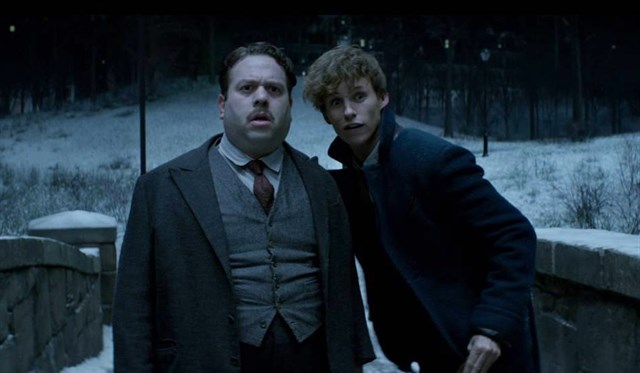Fantastic Beasts: New Forms of Masculinity


Reviewed and approved by the psychologist Sergio De Dios González
Over time, masculinity has taken various forms. For example, try comparing the masculine image of two centuries ago with that of today. Indeed, the second half of the twentieth century was a frenetic period of social action and gave rise to the hippie movement and the sexual revolution. Furthermore, at this time, the fight against racial and gender discrimination gained strength in the United States and around the world.
From this moment on, the image of masculinity started to diversify. Nevertheless, it’s rather unusual to find this diversity in audiovisual representations. As a matter of fact, in the cinema, the image of the ‘alpha male’ is still extremely prevalent. This image isn’t exactly harmless, as it often becomes a role model, especially for younger viewers. However, what does it really imply?
The limitations of traditional masculinity
Traditional masculinity claims that men must meet certain characteristics. For example, a man ‘must’ be strong, brave, muscular, stoic, and rather aggressive. In addition, a traditional man manages to conquer the women around them. These women are often portrayed as sensual, yet weak and vulnerable. A large number of audiovisual productions, series, movies, comics, and advertisements make use of these traditional images.
In general, the male leading character usually achieves their goals by relying on brute force and domination of another. This type of violent character has been naturalized throughout the history of cinema. From the original James Bond to the Marvel comics heroes, to movies like Fast & Furious or The Glass Jungle. The male characters in these films all have the same attributes: they achieve their goals through force.

Another important characteristic of traditional masculinity in cinema is the character’s apathy. Indeed, the protagonists are often emotionally mutilated by past trauma. This makes them incapable of feeling love or affection, although it enhances their warlike capabilities. Also, these men find it extremely difficult to explain or talk about their feelings.
This type of man is far removed from any traditionally feminine role. Female roles are associated with caring for the home, the partner, and the children. Furthermore, traditional femininity is characterized by cowardice, weakness, vulnerability, and, above all, a lack of autonomy. A woman within these traditional standards tends to be shown as delicate and dedicated to fine work. These types of jobs include baking or gardening.
Fantastic beasts and where to find them
The movie, Fantastic Beasts and Where to Find Them, was released in 2016. It was created by JK Rowling, the author of the Harry Potter fantasy saga. The movie takes place in a magical universe created by Rowling. In fact, the protagonist of the story, Newt Scamander, had already been mentioned previously in the Harry Potter books.
Fantastic Beasts tells the story of Newt Scamander, an English zoologist. Newt arrives in New York City in the 1920s. Newt is an Englishman in search of a rare species of animal, which he plans to buy as a gift. Upon arrival, some of his magical creatures escape from the briefcase he carries them in. Consequently, he’s arrested by the magical police.
Through a series of coincidences, Newt meets pastry chef, Jacob Kowalski. Newt and Jacob go on a quest across New York to retrieve the lost creatures while trying to prevent an international magical incident.
The male characters in Fantastic Beasts
Newt Scamander is a curious and good-natured character. He’s dedicated his life to the study of magical animals. Physically, he’s a man of slim build and an almost feminine complexion, with long eyelashes, red lips, and a flirtatious smile. On the other hand, Jacob Kowalski is a stocky man with a loud laugh. Little given to heavy work in the factory, his dream is to establish himself as a confectioner in his own business.
Neither of these characters fills the profile that we mentioned earlier. Both are characters focused on their goals, regardless of the canons established by society.

The 21st century: a moment to renew cinema and society
Movie characters often become heroes and adopt roles for fans to follow. Indeed, since its inception, cinema has managed to captivate the public by depicting certain ways of life. Thus, viewers often unconsciously reproduce in their daily lives certain characteristic attitudes of movie characters.
This influence can be clearly perceived in the behavior of children. That’s because, during childhood, we’re highly impressionable. Therefore, the kinds of attitudes that the child admires will be those that they subsequently reproduce in their adolescence and adulthood.
By presenting varied male characters, children will be influenced by this diversity and will understand that there’s a wide range of possibilities within what’s considered normal and desirable. These types of characters allow boys to understand that they mustn’t abandon their emotions and their sensitivity to being men. They also show them that being boys or men doesn’t necessarily mean being violent and dominating by force or weapons. This will be positive for the development of their personalities and for the construction of a more equitable society.
Only through a new kind of construction of masculinity can a major part of violence be eradicated. In this way, a peaceful society will be able to be built by educating people regarding the acceptance and inclusion of different kinds of characters.
Without a doubt, cinema and cultural productions are spaces for both training and recreation purposes.
This text is provided for informational purposes only and does not replace consultation with a professional. If in doubt, consult your specialist.








